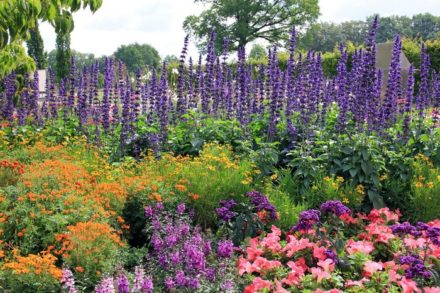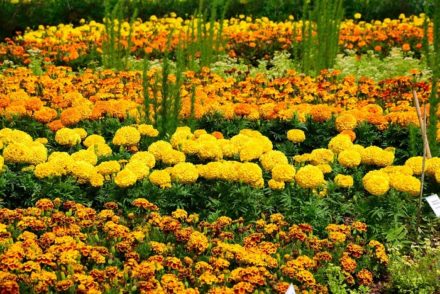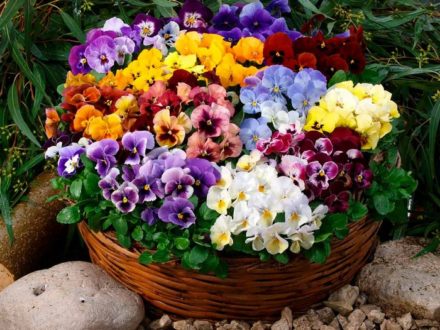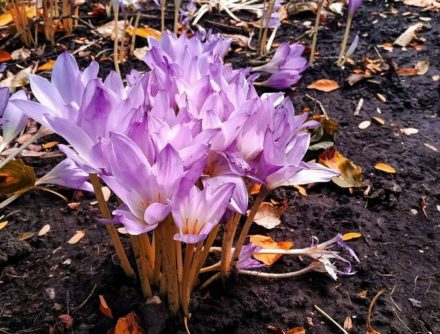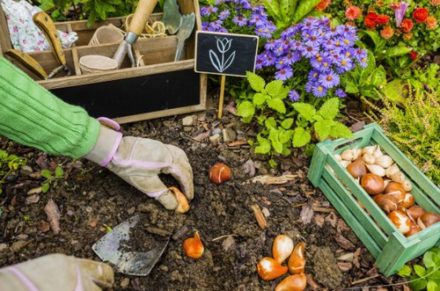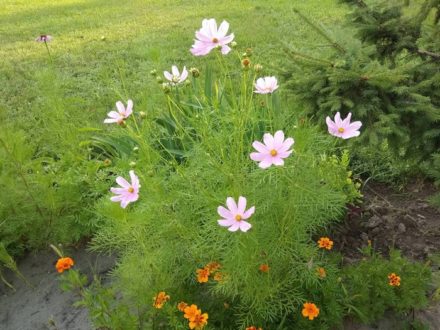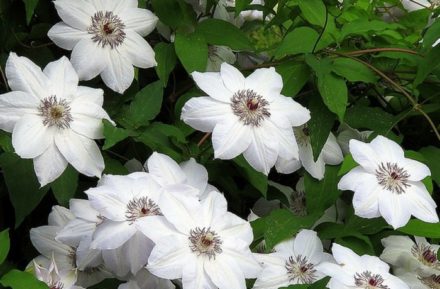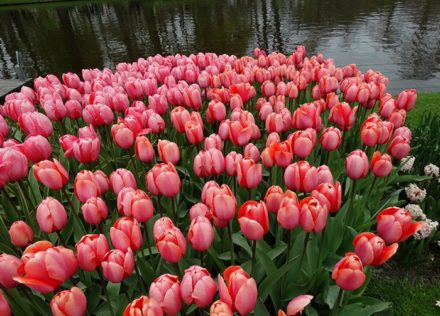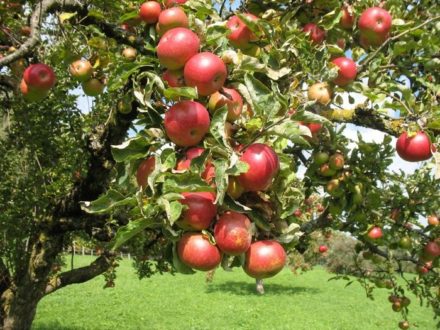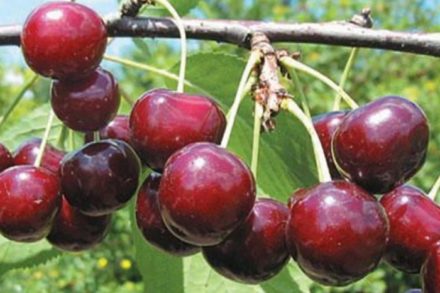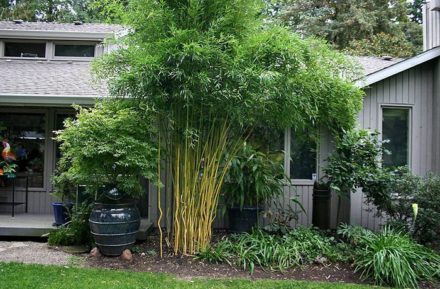No matter how hard you try, it is impossible to ensure that the area is illuminated evenly. There are always places in the garden where the sun rarely shines or doesn’t shine at all. This could be a strip of land along a fence, a lawn located on the north side of the house or in the shade of tall trees. However, these shady corners can be decorated with flowering plants, turning them into a picturesque flower bed.
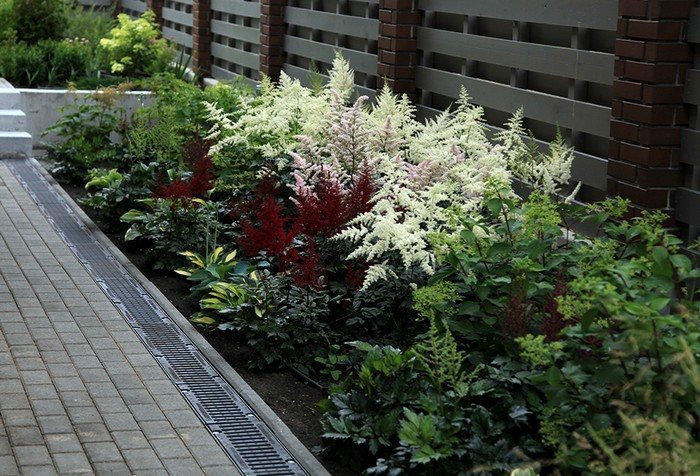
Primrose
Primrose tolerates the lacy shade of trees well. The flower can also be planted on the north side of the house or near the fence. Garden primrose is a perennial plant belonging to the group of primroses. Bright flowers bloom in early April.
In addition to its ability to bloom in shaded areas, primrose is also unpretentious and resistant to diseases. The plant is planted by seeds or seedlings. Primrose shows good germination when sown in winter.

Siberian iris
The Siberian iris has this name for a reason. This plant is characterized by increased endurance and shade tolerance. Once planted, irises require minimal care and still bloom spectacularly. Flower color varies depending on the variety.
The plant thrives in diffused light conditions on the north side of buildings. You can plant irises where the sun will fall on them only in the morning or evening. Flowers are not afraid of winds and drafts, so they can grow in open areas.
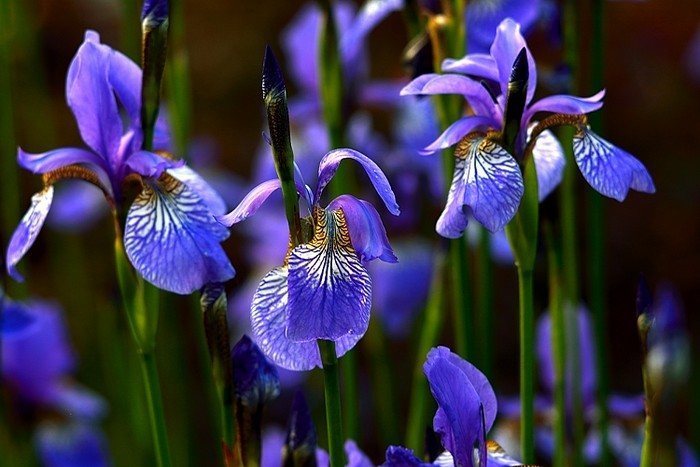
Dicentra
Dicentra flowers look unusual, resembling pink hearts. Depending on the variety, the height of the plant can vary from 30 cm to 1 m. It is best to plant dicentra from late April to mid-May. The plant likes fertile soil.
The planting site is prepared in advance by adding humus (3–4 kg/sq. m) to the ground. There are both annual and perennial varieties of dicentra. All of them have high endurance, resistance to diseases and pests. Perennial species are pruned for the winter, leaving small stumps and covering the root zone with a layer of peat 5–8 cm thick.
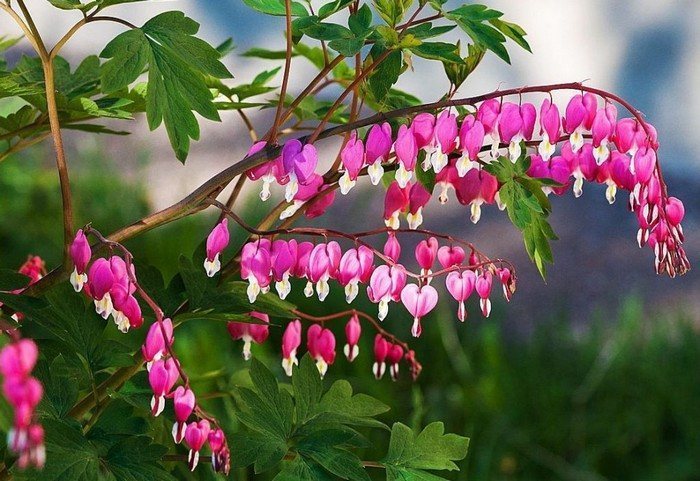
Garden geranium
Garden geranium can bloom both in the sun and in the shade. True, in the latter case the flowering will be somewhat weaker. In areas, this plant is planted even in the tree trunks. Garden varieties of geraniums can tolerate frost, so they do not require digging for the winter.
The flower does not need frequent watering, as it easily tolerates drought. When planting several specimens, a significant distance is maintained between them (at least 30–40 cm), because over time the bushes grow. Garden geranium does not need fertilizing. To maintain a decorative appearance, bushes require pruning.
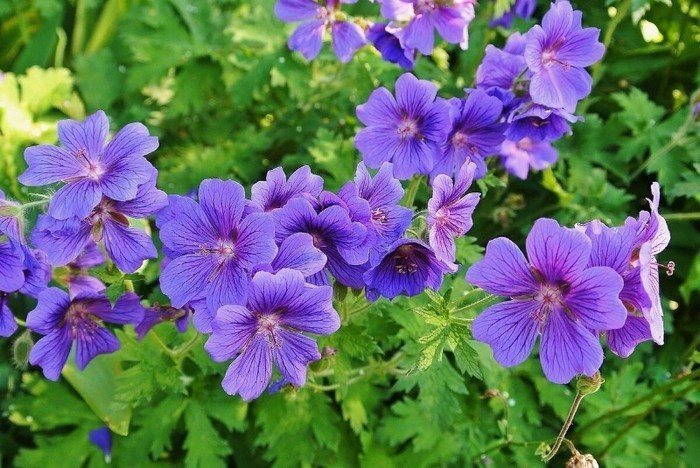
Aquilegia (catchment)
Aquilegia likes partial shade; in the sun its flowers become smaller and the flowering period is shortened. The plant grows well in any soil; however, before planting, it is advisable to fertilize the soil with organic matter. It is better to plant only one variety of aquilegia in one flower bed: these plants do not get along well with each other.
The columbine is propagated by dividing the bush and by seeds.Only specimens no older than two years old can be divided into parts. It is better to avoid completely shaded places when planting aquilegia, as the plant may not bloom. When planting, an interval of 20 cm is maintained between the bushes. To prevent the perennial from freezing, before the arrival of winter, the root zone is covered with a layer of peat or tree bark.
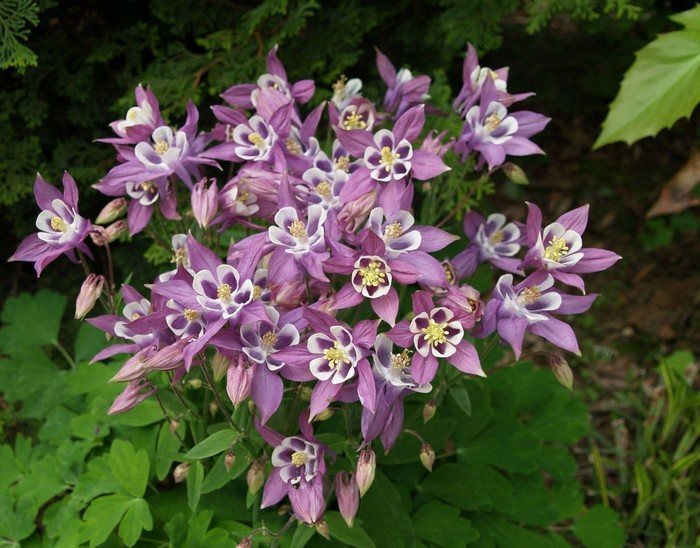
Forget-me-not
Forget-me-nots are touching delicate flowers with blue petals. Since these plants are not tall, they can be used to create a flowering carpet. By using dense planting, forget-me-nots can fill empty areas in the depths of the garden and revitalize the tree trunk area of trees and shrubs.
The plant begins to bloom in late spring. The flowering period lasts about 1.5 months. The plant does not require much care. Depending on the variety, forget-me-nots can be perennial or annual. Some varieties have flowers that are not blue, but white or pink.
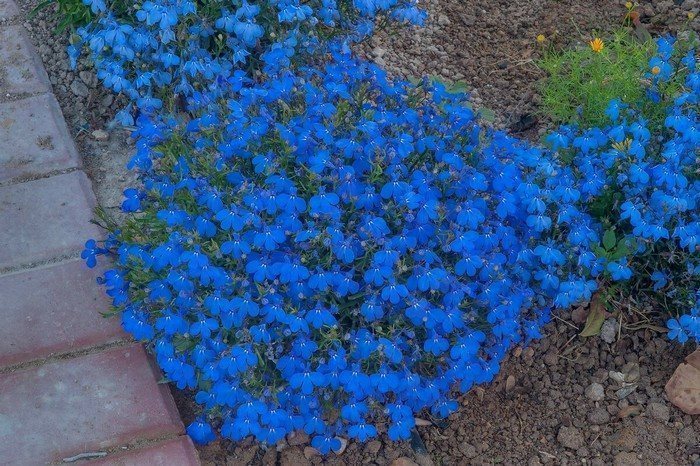
Astilbe
Astilbe is a perennial plant characterized by hardiness and unpretentiousness. It can be safely planted in any corner of the garden that is empty due to insufficient lighting. Astilbe is propagated by rhizomes. It is better to purchase planting material immediately before planting. If the purchase occurred earlier, the rhizome is stored in the refrigerator.
After the outside temperature reaches +15 degrees, the plant is planted in open ground. The landing site can be the northern side of a country house or an area shaded by bushes and trees. The plant likes moderately moist soil; if the groundwater level is high, the soil is drained.Tall varieties of astilbe are planted at intervals of 50 cm; low-growing bushes can be planted closer together.
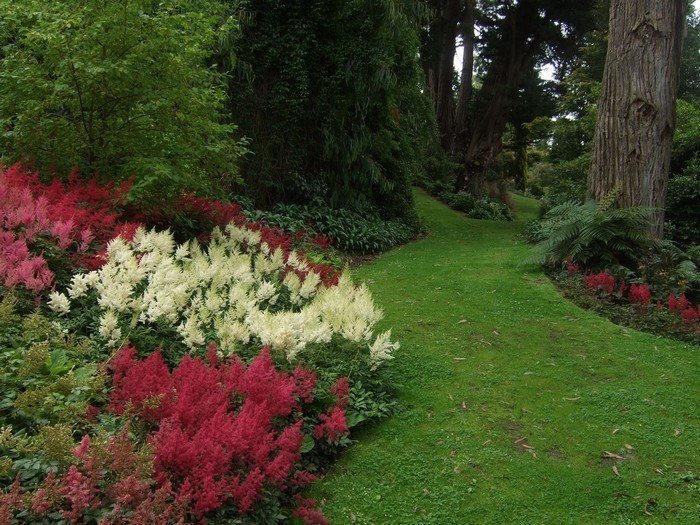
Periwinkle
Periwinkle is a ground cover species. The plant will do well in shaded areas. If the soil is nutritious and loose, periwinkle develops faster and blooms longer. Given the type of growth of the crop, it is often planted in tree trunks.
Periwinkle will decorate with its presence the space under an apple, cherry or pear tree. According to the existing legend, the flower protects the house from the invasion of evil spirits. However, the primary argument for planting this plant is its natural beauty.
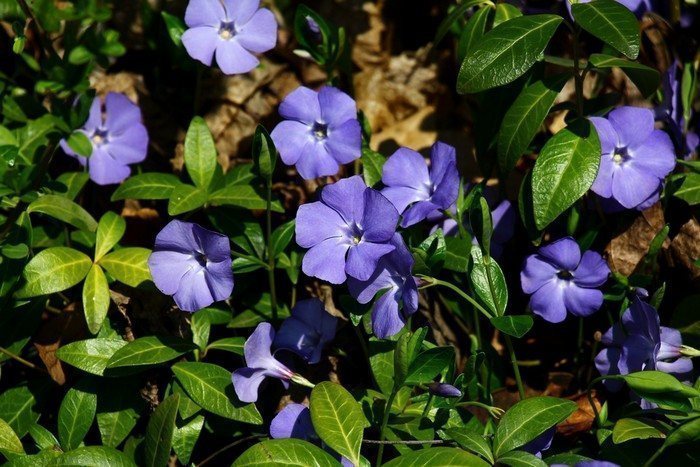
Lobelia
Lobelias delight gardeners with their blooms throughout the summer. The plant will be comfortable in any corner of the garden. However, before this you will need to obtain strong seedlings by growing seedlings from seeds.
Lobelia flowers are bright blue bells. Particularly impressive are ampelous forms with drooping peduncles. The flower is suitable for container planting: in this case, it can be moved from place to place, changing the appearance of the garden.
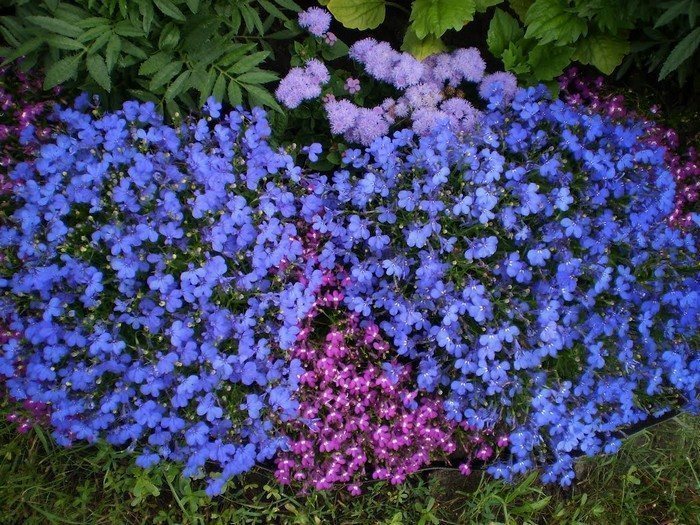
Nasturtium
Nasturtium has a long flowering period. The buds bloom again and again on the plant until frost. The perennial crop is heat-loving, so in the middle zone it is grown as an annual.
However, nasturtium reproduces by self-seeding, and when the weather warms next spring, new specimens of the plant will grow on their own. Initially, nasturtium is grown as seedlings, which are transplanted into the ground with the arrival of stable heat.
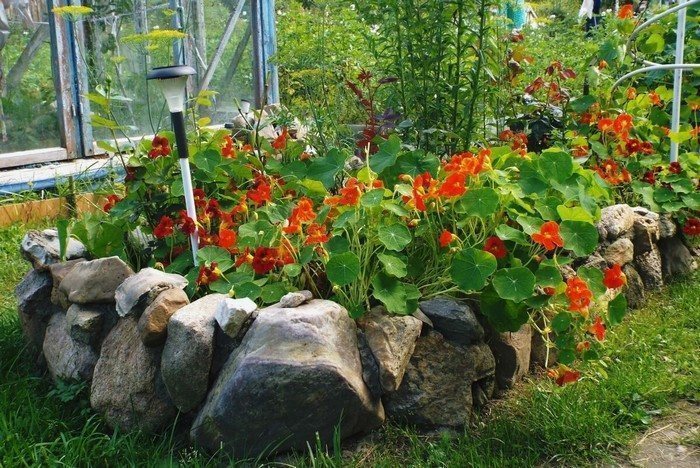
The world of flowers is so diverse that it allows you to choose plants for any growing conditions. The lack of sunlight is not critical for many crops. After planting, the flowers will need to be given at least minimal attention, watering and fertilizing on time. Faded buds must be removed to preserve the decorative appearance of the flower bed and extend the flowering period.


